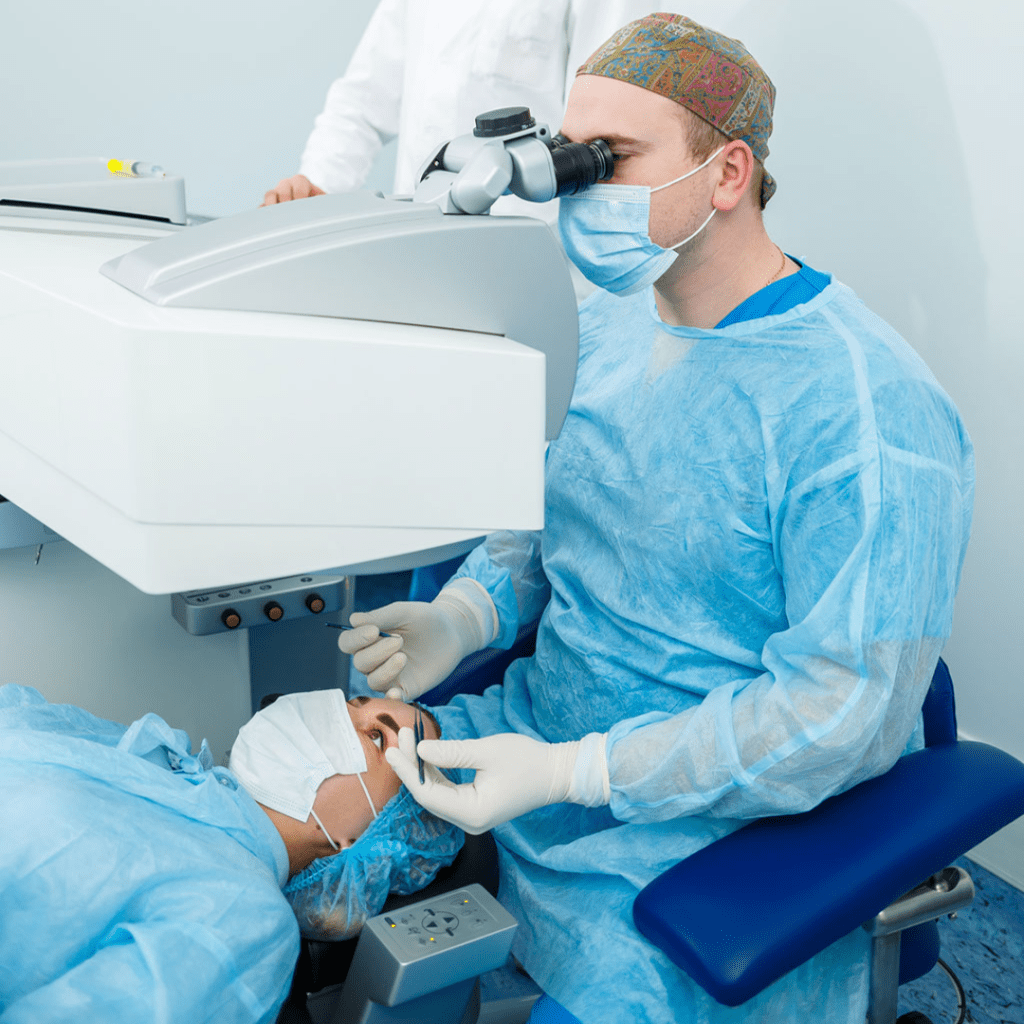Cataracts can impair one or both eyes and often progress slowly. They are most prevalent in people 50 years of age and older, and can happen earlier, even in childhood.
The most common cause of blindness in the world is a cataract, hence prevention, early detection and treatment are essential to restoring vision.
RISK FACTORS:

1. Ageing:
This is the most common cause of cataracts or clouding of the lens. With age, the proteins and fibers in the lens begin to degrade, resulting in the opacity of the naturally clear lens, and obscuration of vision
2. Congenital or inherited genetic conditions:
These cataracts may be inherited or linked to an infection or injury within the womb. Additionally, certain diseases like myotonic dystrophy, galactosemia, or rubella may cause cataracts.
3. Uncontrolled blood sugar in diabetics:
Over time, high blood sugar levels may cause oxidative stress and structural alterations in the eye’s lens that may hasten the onset of cataracts.
4. Overexposure to sunlight:
According to the WHO, there are an estimated 15 million cataract-related blindness cases worldwide; 10% of these cases may be related to UV exposure.

5. Smoking:
Compared to non-smokers, smokers have a two- to three-fold increased risk of developing cataracts.
Smoking increases free radical activity and depletes endogenous antioxidants, both of which lead to oxidative lens damage and may result in cataract development.
6. Obesity:
Excess fat tissues release a chemical called leptin, a source of oxidative stress that can harm the eyes and cause cataracts.
7. High blood pressure:
Hypertension may cause proteins in lens capsules to change in conformation, which would exacerbate the development of cataracts.
8. History of eye injury:
Traumatic cataracts can develop as a result of an eye injury that damages the lens fibers either directly from a penetrating injury or indirectly from the internal forces due to blunt trauma.

9. Prior eye surgery:
A pars plana vitrectomy, or PPV, is known to increase the risk of cataract development and progression.
Inadvertent lens touches during surgery, oxidative stress, and photosensitive lens damage can all lead to cataract.
10. Use of corticosteroid medications over an extended period of time:
Glucocorticoids bind to lens proteins, destabilize the protein structure and cause oxidative stress that results in cataracts.
The type of cataract caused by long-term or high-dose steroids is known as posterior subcapsular cataracts.
11. Alcohol abuse:
This can produce free radicals, which can cause lens proteins to clump together and form cataracts in older people.
12. High dose radiation exposure:
Increasing ionizing radiation dose damages the lens cell membrane, causing the lens to become more opaque.
13. Vitamin D deficiency:
This study found a link between vitamin D deficiency and Posterior Subcapsular Cataract (PSC), indicating that increasing vitamin D intake may lower the incidence of PSC.
TIPS FOR PREVENTION
1. Quit smoking.
2. Maintain normal level blood pressure and blood sugar.

3. Eat an antioxidant-rich, healthy diet. Studies have shown that vitamin C is particularly helpful in preventing cataracts. The aqueous humor provides the lens with the antioxidant known as ascorbate (vitamin C). The powerful antioxidant ascorbate successfully neutralizes these reactive oxygen species, delaying the development of cataracts.
4. Protect your eyes from the sun by wearing wide-brimmed hats and sunglasses.
5. Don’t drink too much alcohol
6. Stay fit and exercise for healthy weight
7. Do not abuse steroids. For recommended usage, speak with your doctor.
